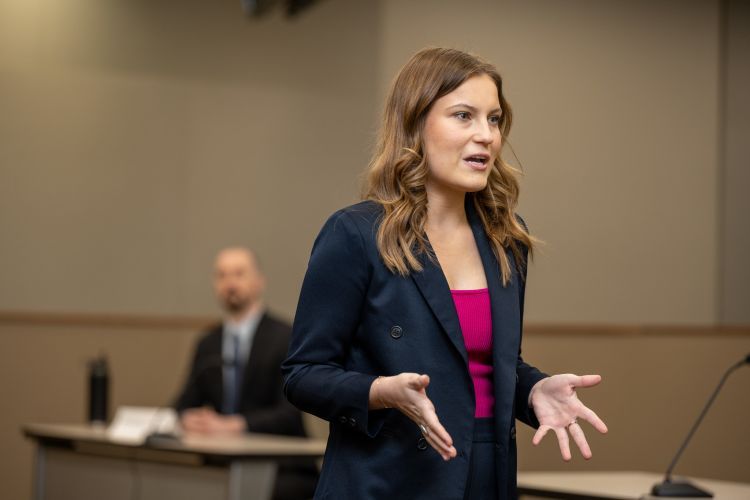The Duty of Aesthetic Help in Effective Trial Presentations: An Overview for Attorneys
Browsing the Complexities of Test Presentations: Tips for Seamless Delivery and Engaging Arguments
In the world of lawful process, the art of test presentation stands as a crucial factor of success. The intricacies integral in test discussions require a delicate balance of strategy, finesse, and ability.

Understanding Test Objectives
To efficiently browse a test, it is critical to have a clear understanding of the objectives that need to be accomplished. Before entering the court room, lawful teams must define their goals and preferred results. These purposes work as leading concepts throughout the test, forming approaches and affecting decision-making procedures.
Comprehending test objectives includes a detailed analysis of the situation, legal precedents, and the client's benefits. Trial Presentations. It requires a precise examination of the facts, identifying key issues, and anticipating possible obstacles. By establishing certain and quantifiable goals, lawyers can customize their discussions and disagreements to align with the desired outcomes
In addition, a clear understanding of trial objectives makes it possible for lawful teams to prioritize proof, witnesses, and legal debates efficiently. It permits the growth of a coherent story that resonates with the court and court, strengthening the overall instance presentation.

Organizing Proof Successfully
Having a clear understanding of trial purposes lays the foundation for arranging evidence properly in legal process. By straightening the presentation of proof with the desired end results of the trial, lawful groups can enhance their debates and improve their persuasiveness.
An additional secret component in organizing evidence properly is establishing a sensible flow. Providing evidence in a meaningful and consecutive fashion can assist construct a compelling story that supports the legal debates being made. Additionally, utilizing aesthetic aids such as timelines, graphs, or charts can better enhance the organization of proof and aid in clarifying complicated partnerships or series of events.
Additionally, making sure that all evidence provided is relevant and acceptable to the situation is crucial. Unimportant or inadmissible proof can interfere with the toughness of the debate and potentially harm the reputation of today celebration. A precise testimonial and option procedure should be undertaken to consist of only the most legally sound and impactful evidence in the test discussion.
Crafting Influential Narratives
Crafting compelling stories plays a crucial function in providing influential arguments throughout lawful proceedings. When creating a story for a test presentation, it is important to develop a clear story that highlights essential points and connects them in a systematic manner. By weaving with each other evidence, testament, and legal disagreements right into a persuasive and cohesive story, lawful professionals can efficiently support for their customers and enhance the possibility of a beneficial end result in the court room.
Understanding Visual Aids
Effective use visual aids is vital to boosting the influence and clearness of trial discussions. Visual aids, when made use of purposefully, have the power to This Site simplify complex details, strengthen bottom lines, and leave a lasting impact on the discretionary. To understand visual help in trial presentations, it is critical to ensure that they are clear, concise, and pertinent to the disagreements being made.
When integrating aesthetic aids, such as charts, pictures, graphs, or timelines, into have a peek here a trial discussion, it is crucial to keep them visually appealing yet expert. The visuals should match the spoken debates, providing a visual representation of the info being gone over without frustrating the audience with unnecessary information.
In addition, experimenting the visual help ahead of time is important to guarantee a smooth delivery during the trial. investigate this site Acquainting oneself with the content, changes, and timings of each visual help can help keep the circulation of the discussion and avoid technical problems that may emerge.
Supplying Impactful Closing Arguments
An engaging closing disagreement serves as the conclusion of a trial presentation, enveloping the core narrative and convincing the judge and court towards a beneficial decision. To provide an impactful closing argument, it is crucial to succinctly wrap up vital points, highlight the staminas of your instance, and attend to any kind of weaknesses in a critical fashion. Begin by outlining the main arguments that support your client's placement, emphasizing why the evidence offered throughout the trial supports your narrative. It is vital to create a feeling of cohesion and clearness, directing the court and court in the direction of the preferred conclusion.
Moreover, incorporating emotional allure can even more reinforce your closing argument. Inevitably, a well-crafted closing debate should leave a long-term perception, engaging the judge and jury to rule in your client's support.
Conclusion
To conclude, grasping test presentations includes recognizing goals, organizing proof, crafting stories, making use of aesthetic help, and providing impactful closing arguments. By executing these approaches successfully, attorneys can present their case flawlessly and make compelling arguments in the court room. It is crucial to browse the complexities of test discussions with accuracy and ability to accomplish success in lawful procedures.
By lining up the discussion of evidence with the desired end results of the trial, legal teams can enhance their disagreements and improve their persuasiveness (Trial Presentations). To grasp visual help in test discussions, it is essential to make certain that they are clear, concise, and pertinent to the disagreements being made
An engaging closing disagreement serves as the end result of a trial discussion, encapsulating the core story and persuading the judge and court in the direction of a positive choice. Begin by detailing the major disagreements that sustain your customer's placement, highlighting why the evidence offered throughout the test sustains your story.In conclusion, grasping trial presentations includes understanding goals, arranging evidence, crafting stories, making use of aesthetic aids, and providing impactful closing disagreements.